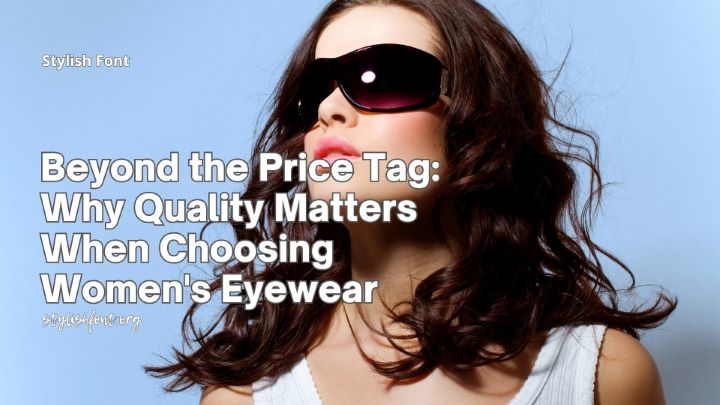The fast fashion industry has experienced exponential growth over the past two decades, driven by a consumer culture that prioritizes affordability and rapid turnover of trends. Retailers have capitalized on this demand by producing clothing at an unprecedented pace, often sacrificing quality and ethical considerations in the process. This relentless pursuit of profit has led to a lack of transparency in the fashion supply chain, where the origins of materials, labor conditions, and environmental impacts are frequently obscured.
As brands race to deliver the latest styles, the complexities of their production processes become hidden from consumers, creating a disconnect between what is worn and the realities of how it is made. The consequences of this lack of transparency are profound. Consumers are often unaware of the true cost of their clothing, which can include exploitative labor practices and significant environmental degradation.
The fast fashion model thrives on a cycle of consumption that encourages frequent purchases and disposability, further complicating the issue of transparency. As brands prioritize speed and cost over ethical practices, the need for accountability becomes increasingly urgent. The rise of fast fashion has not only transformed the retail landscape but has also raised critical questions about the ethical implications of consumer choices and the responsibility of brands to provide clear information about their practices.
Key Takeaways
- Fast fashion has led to a lack of transparency in the fashion industry, impacting workers and the environment.
- Untransparent fashion practices contribute to environmental degradation and social injustices, such as poor working conditions and low wages.
- Consumer awareness and demand for transparency can drive positive change in the fashion industry.
- Ethical and transparent fashion practices can lead to benefits such as improved worker conditions and reduced environmental impact.
- Supply chain transparency is crucial in ensuring ethical and sustainable practices in the fashion industry.
The Environmental and Social Consequences of Untransparent Fashion Practices
Environmental Consequences
Moreover, many garments are designed for short-term use, leading to a throwaway culture that fills landfills with discarded clothing. The lack of transparency in sourcing materials and manufacturing processes means that consumers remain largely unaware of these environmental costs, perpetuating a cycle of consumption that harms the planet.
Social Consequences
Many fast fashion brands rely on low-wage labor in developing countries, where workers often face unsafe working conditions and long hours without fair compensation. The absence of transparency allows these practices to continue unchecked, as consumers remain oblivious to the human cost behind their purchases. Reports of factory collapses and labor rights violations have highlighted the urgent need for reform within the industry.
The Need for Accountability
Without transparency, it becomes challenging to hold brands accountable for their actions, leaving vulnerable workers at risk and perpetuating systemic inequalities.
The Role of Consumer Awareness in Demanding Fashion Transparency

Consumer awareness plays a pivotal role in driving demand for transparency within the fashion industry. As individuals become more informed about the implications of their purchasing decisions, they are increasingly seeking out brands that prioritize ethical practices and sustainability. Social media platforms have amplified this awareness, allowing consumers to share information about unethical practices and support brands that align with their values.
This shift in consumer behavior has prompted some companies to adopt more transparent practices in response to public pressure. Moreover, educational initiatives aimed at raising awareness about the fashion industry’s impact have gained traction. Organizations and activists are working tirelessly to inform consumers about the importance of ethical fashion choices, encouraging them to ask questions about where their clothes come from and how they are made.
This growing consciousness among consumers is not just a trend; it represents a fundamental shift in how people view their relationship with fashion. As awareness continues to spread, it is likely that more consumers will demand transparency from brands, ultimately leading to a more ethical and sustainable industry.
The Benefits of Ethical and Transparent Fashion Practices
| Benefits | Ethical and Transparent Fashion Practices |
|---|---|
| 1 | Improved working conditions for garment workers |
| 2 | Reduced environmental impact |
| 3 | Support for local communities |
| 4 | Increased consumer trust and loyalty |
| 5 | Enhanced brand reputation |
Embracing ethical and transparent fashion practices offers numerous benefits for both brands and consumers. For companies, transparency can enhance brand loyalty and trust among consumers who are increasingly prioritizing ethical considerations in their purchasing decisions. By openly sharing information about sourcing, production processes, and labor conditions, brands can differentiate themselves in a crowded market and build a reputation for integrity.
This not only attracts conscientious consumers but also fosters a sense of community among like-minded individuals who value ethical practices. For consumers, choosing transparent brands means supporting businesses that align with their values while contributing to positive change within the industry. Ethical fashion practices often lead to higher quality products that are designed to last, reducing the need for frequent replacements.
Additionally, consumers can feel empowered knowing that their purchases support fair labor practices and environmentally sustainable methods. This shift towards ethical consumption not only benefits individuals but also contributes to a broader movement towards sustainability and social responsibility within the fashion industry.
The Importance of Supply Chain Transparency in Fashion
Supply chain transparency is crucial for fostering accountability within the fashion industry. A transparent supply chain allows consumers to trace the journey of their clothing from raw materials to finished products, providing insight into the ethical implications of their purchases. By understanding where materials are sourced and how garments are produced, consumers can make informed choices that align with their values.
Furthermore, transparency in the supply chain can help identify areas for improvement, enabling brands to address issues related to labor rights and environmental impact. Brands that prioritize supply chain transparency often find that it enhances their operational efficiency as well. By mapping out their supply chains and identifying potential risks or inefficiencies, companies can streamline processes and reduce costs.
Additionally, transparent supply chains foster collaboration among stakeholders, including suppliers, manufacturers, and consumers. This collaborative approach can lead to innovative solutions that benefit all parties involved while promoting ethical practices throughout the industry.
The Impact of Transparency on Worker Rights and Fair Wages in the Fashion Industry

Transparency has a profound impact on worker rights and fair wages within the fashion industry. When brands commit to transparency, they create an environment where labor practices can be scrutinized and improved. This accountability encourages companies to adopt fair labor standards and ensure that workers receive just compensation for their efforts.
By disclosing information about wages, working conditions, and labor practices, brands can demonstrate their commitment to ethical treatment of workers. Moreover, transparency empowers workers by giving them a voice in advocating for their rights. When consumers demand information about labor practices, it creates pressure on brands to prioritize worker welfare.
This shift can lead to improved conditions for garment workers, including safer workplaces and fair wages. As more brands embrace transparency as a core value, it becomes increasingly possible to create a fashion industry that respects human rights and promotes social equity.
The Connection Between Transparency and Sustainable Fashion
The connection between transparency and sustainable fashion is undeniable. Sustainable fashion seeks to minimize environmental impact while promoting ethical labor practices, and transparency is essential for achieving these goals. By openly sharing information about sourcing materials, production methods, and environmental initiatives, brands can demonstrate their commitment to sustainability.
This transparency not only builds trust with consumers but also encourages other companies to adopt similar practices. Furthermore, transparency allows consumers to make informed choices about their clothing purchases based on sustainability criteria. As awareness grows around issues such as carbon footprints, water usage, and waste management, consumers are increasingly seeking out brands that prioritize sustainable practices.
By providing clear information about their environmental impact, brands can attract eco-conscious consumers who are willing to support businesses that align with their values.
How Fashion Transparency Contributes to Reducing Waste and Pollution
Fashion transparency plays a critical role in reducing waste and pollution within the industry. By shedding light on production processes and material sourcing, brands can identify areas where waste can be minimized or eliminated altogether. For instance, transparent supply chains allow companies to track inventory levels more accurately, reducing overproduction—a significant contributor to waste in fast fashion.
Additionally, when consumers are informed about the environmental impact of their clothing choices, they are more likely to make sustainable decisions. This includes opting for higher-quality garments that are designed to last rather than disposable fast fashion items. As consumer demand shifts towards more sustainable options, brands are incentivized to adopt practices that prioritize waste reduction and pollution control.
Ultimately, transparency fosters a culture of accountability that encourages both brands and consumers to work together towards a more sustainable future.
The Influence of Transparency on Brand Reputation and Consumer Trust
Transparency significantly influences brand reputation and consumer trust in today’s market landscape. In an era where information is readily accessible, consumers are increasingly skeptical of brands that fail to disclose their practices openly. Companies that prioritize transparency are often viewed as more trustworthy and credible by consumers who value honesty in business dealings.
This trust can translate into brand loyalty as customers feel confident supporting companies that align with their values. Moreover, a strong reputation for transparency can serve as a competitive advantage in a crowded marketplace. Brands that openly communicate their commitment to ethical practices are more likely to attract conscientious consumers who prioritize sustainability and social responsibility in their purchasing decisions.
As consumer expectations continue to evolve, companies that embrace transparency will be better positioned to thrive in an increasingly discerning market.
The Legal and Regulatory Framework for Fashion Transparency
The legal and regulatory framework surrounding fashion transparency is evolving as governments and organizations recognize the need for accountability within the industry. Various countries have begun implementing regulations aimed at promoting transparency in supply chains and ensuring ethical labor practices. For instance, some jurisdictions require companies to disclose information about their sourcing practices or report on their environmental impact.
These regulations not only hold brands accountable but also empower consumers by providing them with access to critical information about the products they purchase. As legal frameworks continue to develop globally, it is likely that more stringent requirements will emerge, pushing brands towards greater transparency in their operations. This shift represents an important step towards creating a more ethical fashion industry where accountability is prioritized.
The Future of Fashion: Embracing Transparency for a More Ethical and Sustainable Industry
The future of fashion hinges on embracing transparency as a fundamental principle guiding industry practices. As consumer awareness continues to grow alongside demands for ethical treatment of workers and sustainable production methods, brands must adapt or risk becoming obsolete. Embracing transparency not only aligns with evolving consumer values but also fosters innovation within the industry as companies seek new ways to improve their practices.
In this future landscape, collaboration among stakeholders will be essential for driving meaningful change. Brands will need to work closely with suppliers, manufacturers, and consumers to create transparent systems that prioritize ethical considerations at every stage of production. By collectively embracing transparency as a core value, the fashion industry can pave the way for a more sustainable future—one where ethical practices are not just an afterthought but an integral part of how business is conducted.
In conclusion, the rise of fast fashion has brought significant challenges related to transparency within the industry. However, through increased consumer awareness and demand for ethical practices, there is an opportunity for transformation towards a more sustainable future. By prioritizing transparency across all aspects of production—from supply chains to labor rights—brands can contribute positively to both society and the environment while building trust with consumers who seek responsible choices in their fashion purchases.
FAQs
What is fashion transparency?
Fashion transparency refers to the practice of openly sharing information about the production processes, supply chain, and environmental and social impacts of clothing and accessories. It involves providing consumers with clear and accurate details about how a fashion item is made, where it comes from, and the conditions under which it was produced.
Why is fashion transparency important?
Fashion transparency is important because it allows consumers to make informed choices about the products they buy. It also helps to hold fashion brands and retailers accountable for their social and environmental practices. By being transparent, companies can build trust with consumers and work towards more sustainable and ethical practices in the fashion industry.
What are some examples of fashion transparency initiatives?
Some examples of fashion transparency initiatives include publishing supplier lists, providing information about the materials used in products, sharing details about production processes, and disclosing environmental and social impact assessments. Some brands also use certifications and labels to indicate their commitment to transparency and sustainability.
How can consumers support fashion transparency?
Consumers can support fashion transparency by asking brands and retailers for more information about their products and supply chain practices. They can also look for certifications and labels that indicate a company’s commitment to transparency and sustainability. Additionally, consumers can choose to support brands that are known for their transparent practices and ethical standards.





